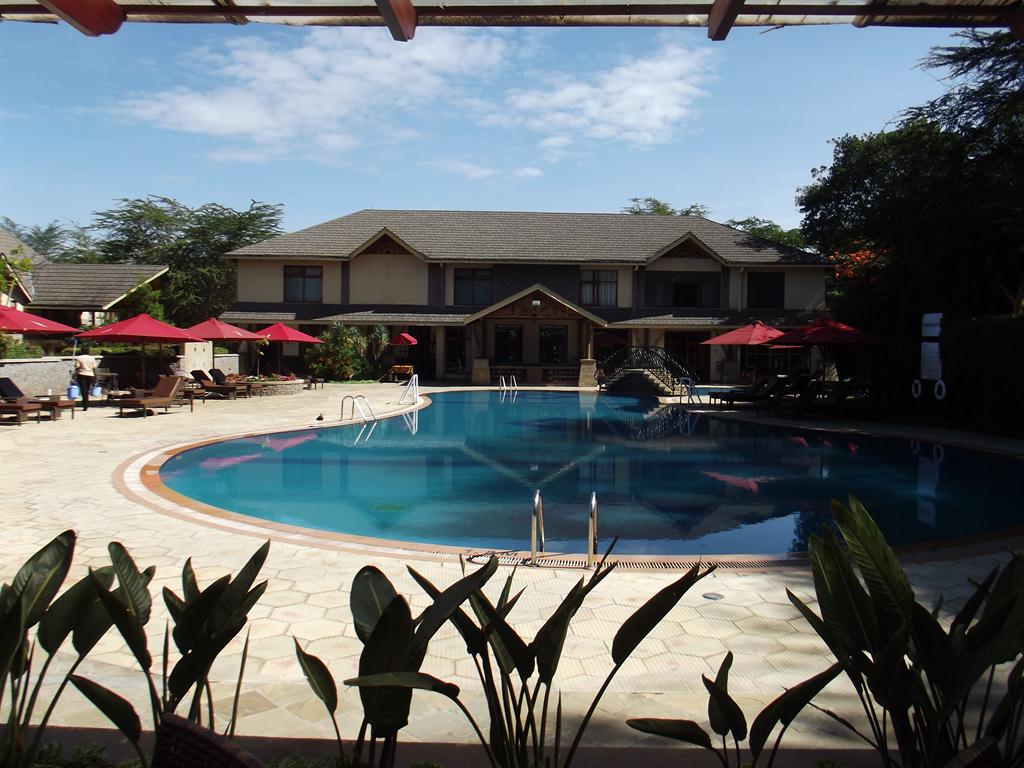Kenya knows about tourism
Investment, local tourist support and a proud heritage of service excellence bring success.
Augetto Graig in Nairobi - This week president Hage Geingob and first lady Monica Geingos visited Kenya’s capital Nairobi for a warm reception and to represent Namibia at the historic inauguration of the second term of that country’s president Uhuru Kenyatta.
Kenyatta’s retention of Kenyan leadership was by no means without complication and police violence has added to tribal tensions that threatened the outcome of the election and still pose a threat to security in the country.
Nevertheless, the first couple are not the only Namibians visiting the paradise that is Kenya, contributing to an average of close to 11 000 visitors who arrive at Jomo Kenyatta International Airport from southern African hub Johannesburg each month this year. From all over Africa almost 38 000 visitors land at Nairobi’s main airport each month and the numbers of African and Kenyan tourists have been rising. Growth in these categories in 2016 is reflected in the Kenya Tourism Board’s (KTB) report that the number of air arrivals from the African continent hit 251 626 in 2016, up from 194 870 in 2015. Of this total number, visitors from Uganda and South Africa comprised a cumulative 86 940 visitors, or about 35%. Rising arrivals from the African continent have helped the industry offset some of its losses from traditional markets in Europe.
Stats
Domestic tourism has also been gathering momentum after the KTB launched a US$300 000 SMS marketing campaign in January 2016 aimed at drawing more Kenyans to tourist hotspots.
Ongoing campaigns urge hotel and tour operators to reduce rates for domestic tourists during the low season and are already paying dividends. The government had targeted a 3% increase in domestic tourists’ share of total occupied hotel nights in the country by 2017 after the Kenyan National Bureau of Statistics reported that Kenyan visitors comprising 53.5% of total occupied hotel nights over the course of 2015, up from 47% in 2014.
According to the World Travel and Tourism Council report on annual research of tourism contribution to the Kenyan economy in 2017, the industry has made a direct contribution of 3,7% gross domestic product (GDP), or US$2,5 billion in 2016, and this year is expected to bring in 6% more, followed by similar growth each year until 2027 when the country could earn US$4,8 billion from visitors. Total contribution is expected to top US$12,3 billion, amounting to 9,5% of GDP by that time (2027).
Supporting this continued growth is more investment in the industry, with 2016 recording US$800 million and this year’s total investment expected to grow another 6,6%, the World Travel and Tourism Council statistics indicate. However, world class infrastructure and top notch facilities are not the only contributors to the resilient success of Kenyan tourism in recent times. Visitors testify that the level of service provided by the 400 000 Kenyans employed in the industry makes for a refreshing and congenial experience, especially for southern Africans who are not used to genuine pride of service.
National spirit
One example is to be found at the remarkable Enashipai Resort and Spa on the shores of lake Naivasha, some two hours drive from the capital.
Here state of the art facilities are nestled among the tall trees of the natural landscape and excellent conference facilities attract as many business travellers as the lucky number of visitors staying purely for pleasure. In the evenings those distinctions fall away during fully catered dinners and under the friendly attentions of the immaculately dressed serving staff. The on-site nightclub is testament to efforts at the lodge to provide visitors with all they desire right where they are. From bicycle rides to boat trips on the lake, opportunities to interact with the abundant wildlife are always close at hand.
Nairobi itself captures this national spirit of the proud host providing a bustling hive of colourful activity to capture the imagination. Adventurers can take their chances on a ‘boda-boda’ motorcycle taxi, or ride first-class in a done-up Matatu public transport bus. The city of 4 million also offers rail transport to residents while the abundance of private vehicles can make traffic congestion a real headache. However, Kenyans know how to make the best of things and how to shelter their guests from the harsher realities of life.
Kenyatta’s retention of Kenyan leadership was by no means without complication and police violence has added to tribal tensions that threatened the outcome of the election and still pose a threat to security in the country.
Nevertheless, the first couple are not the only Namibians visiting the paradise that is Kenya, contributing to an average of close to 11 000 visitors who arrive at Jomo Kenyatta International Airport from southern African hub Johannesburg each month this year. From all over Africa almost 38 000 visitors land at Nairobi’s main airport each month and the numbers of African and Kenyan tourists have been rising. Growth in these categories in 2016 is reflected in the Kenya Tourism Board’s (KTB) report that the number of air arrivals from the African continent hit 251 626 in 2016, up from 194 870 in 2015. Of this total number, visitors from Uganda and South Africa comprised a cumulative 86 940 visitors, or about 35%. Rising arrivals from the African continent have helped the industry offset some of its losses from traditional markets in Europe.
Stats
Domestic tourism has also been gathering momentum after the KTB launched a US$300 000 SMS marketing campaign in January 2016 aimed at drawing more Kenyans to tourist hotspots.
Ongoing campaigns urge hotel and tour operators to reduce rates for domestic tourists during the low season and are already paying dividends. The government had targeted a 3% increase in domestic tourists’ share of total occupied hotel nights in the country by 2017 after the Kenyan National Bureau of Statistics reported that Kenyan visitors comprising 53.5% of total occupied hotel nights over the course of 2015, up from 47% in 2014.
According to the World Travel and Tourism Council report on annual research of tourism contribution to the Kenyan economy in 2017, the industry has made a direct contribution of 3,7% gross domestic product (GDP), or US$2,5 billion in 2016, and this year is expected to bring in 6% more, followed by similar growth each year until 2027 when the country could earn US$4,8 billion from visitors. Total contribution is expected to top US$12,3 billion, amounting to 9,5% of GDP by that time (2027).
Supporting this continued growth is more investment in the industry, with 2016 recording US$800 million and this year’s total investment expected to grow another 6,6%, the World Travel and Tourism Council statistics indicate. However, world class infrastructure and top notch facilities are not the only contributors to the resilient success of Kenyan tourism in recent times. Visitors testify that the level of service provided by the 400 000 Kenyans employed in the industry makes for a refreshing and congenial experience, especially for southern Africans who are not used to genuine pride of service.
National spirit
One example is to be found at the remarkable Enashipai Resort and Spa on the shores of lake Naivasha, some two hours drive from the capital.
Here state of the art facilities are nestled among the tall trees of the natural landscape and excellent conference facilities attract as many business travellers as the lucky number of visitors staying purely for pleasure. In the evenings those distinctions fall away during fully catered dinners and under the friendly attentions of the immaculately dressed serving staff. The on-site nightclub is testament to efforts at the lodge to provide visitors with all they desire right where they are. From bicycle rides to boat trips on the lake, opportunities to interact with the abundant wildlife are always close at hand.
Nairobi itself captures this national spirit of the proud host providing a bustling hive of colourful activity to capture the imagination. Adventurers can take their chances on a ‘boda-boda’ motorcycle taxi, or ride first-class in a done-up Matatu public transport bus. The city of 4 million also offers rail transport to residents while the abundance of private vehicles can make traffic congestion a real headache. However, Kenyans know how to make the best of things and how to shelter their guests from the harsher realities of life.











Comments
Namibian Sun
No comments have been left on this article